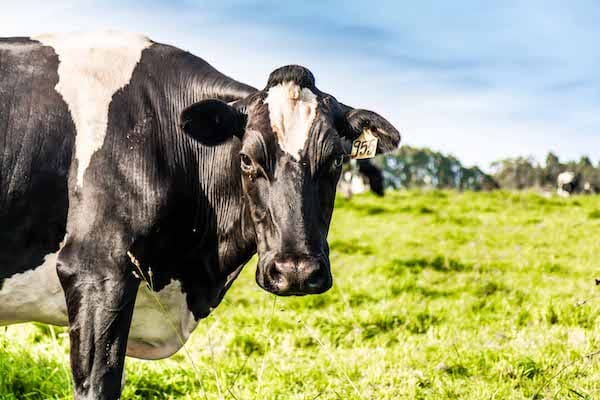As a progressive livestock farmer, we know that you are looking to make improvements continuously.
You are always finding ways to improve cattle health. You have invested in technology to measure milk outputs. And you already understand the importance of managing your pasture fields.
The simplest way to measure and manage your pasture range is to use a rising plate meter (RPM). If you have not read our article on the rising plate meter, please do so. It talks about how this simple tool can help you measure your pasture fields. It is also the top-ranked article on the subject – according to Google search results.
In this article, we attempt to push the boundary further and help you see whether rising plate meters are the right choice for you or not. To do this, let us talk about 4 things that rising plate meters are not good at.
1. RPMs do not measure pasture growth accurately
2. RPMs cannot measure pasture growth regularly
3. RPMs cannot measure pasture growth in a cost-effective manner
4. RPMs often do not help you make effective grazing decisions
1. RPMs do not measure pasture growth accurately
At any moment, RPMs can only measure vegetation growth at a particular point. To get an overall assessment of your pasture, you will have to take multiple measurements across your paddocks on your farm. Usually, around 40 to 60 measurements are taken across a diagonal transect of land. But the more the number of readings, the more accurate your assessment will be.
As you already know, vegetation growth is dependent on factors such as gradient slope, soil type, as well as irrigation and rainfall. These factors vary from place to place. This means that 60 measurements taken at particular points cannot accurately measure the growth of your entire pasture. On top of this, you also have to write down the readings at every point manually. This could also lead to unintended human errors or numbers being delivered in electronic form to a clunky piece of software.
An RPM is also designed only to measure vegetation growth in terms of height. It does not give you any information about density or quality and certainly not spatially. As you already know from experience, vegetation in pasture lots can sometimes grow sparsely. In some seasons, when the grass set seed, RPM measurements can be misleading, as they take into account the total height of vegetation, including the seed heads. This means that RPM measurements could overestimate dry matter content (DM%). RPM measurements can also overestimate DM when dealing with some species such as diploids, Italians, hybrids, and annuals.

This overestimation means that the pasture quality might not have sufficient dry matter (DM) to meet the nutritional requirements of your livestock. In other words, at times, RPM data can be misleading. And worse, it leads to lower nutrition for your animals and lowers farm productivity.
2. RPMs cannot measure pasture growth regularly
There are obvious advantages of measuring your pasture growth regularly. You can ensure that your livestock gets enough nutrition. You can identify intervention areas. You can better plan your resources to avoid a lack of fodder. You can pre-empt potential threats and expensive last-minute fodder purchases.
But you need a human to use the RPM. This means that every time you want to measure pasture growth, you or someone reliable has to use the RPM to get you this information. As it is, there is always enough work to do on the farm. Not to mention the occasional emergencies. Depending on how accurately you want this done, it could take about 4 man-hours to measure around 100 ha of pasture. This can overcome even the best processes and intentions. In reality, the task of measuring pasture growth with an RPM often gets relegated to low priority status and a strong feeling of "oh no, it is that time again." This could mean that you don't end up measuring your pasture as regularly as you need to. Resulting in lower farm productivity.

3. RPMs cannot measure pasture growth in a cost-effective manner
Depending on various features and build quality, today, you can buy a rising plate meter for anywhere between 300 and 1200 AUD. Mostly, RPMs do not have any ongoing maintenance costs. So in a sense, RPMs are a cheap way to measure pasture growth. However, they can also be very costly. Why? Because it has high associated labor, time, and error costs.
As discussed earlier, you need about 4 man-hours of effort to measure growth for approximately 100 ha of pasture. You know how hard it is to find reliable farm labor today in Australia and New Zealand. It is also expensive to pay a person for this, every time you want to measure your pasture growth. Often, this key factor gets overlooked.
Even if you manage to measure pasture with an RPM regularly, you still have to map the readings onto your farm layout. This takes additional time and effort. Surely as a farmer, you know that time is equal to money. Instead, you could use this time and effort to perform other critical farm tasks that could give you better results and profits. There is also a high error cost. What if manual errors severely overestimate available Kg DM/ ha? You would then have to pay in terms of lower milk production or higher last-minute fodder purchase costs.

4. RPMs often do not help you make effective grazing decisions
As a progressive livestock farmer, one of your primary objectives is to ensure that your cattle get enough nutrition throughout the year. To achieve this goal through pasture means you improve cattle health and farm profits. This boils down to making effective daily and weekly grazing decisions. Ideally, you would need to know how much kg DM each of your paddocks has on a daily or weekly basis. You would also analyze this information over time to identify intervention areas to improve your pasture. On top of this, you would ideally also want to take into account your weather and farm data to make the analysis more relevant.
Let us be clear. RPMs cannot help you do this. RPMs can only give you rough estimates that you would then have to map on to your farm layout to make sense of. You would also have to meticulously store this information physically in some way to be able to use it for analysis. In short, an RPM cannot help you make effective grazing decisions.

5. Summary
As Albert Einstein once said, everything should be as simple as it can be, but not simpler. Making things far too simple could result in making them less useful.
If you own and run a livestock farm, especially one that is larger than 100 ha, by using RPMs, you might be losing out on opportunities to manage your pasture better.
What if there was a better way to manage your pasture effectively? Something to help you make effective grazing decisions frequently, based on data and insights from your farm. Something automatic. Something quick and easy-to-use. Something that is cost-effective and can help you get a 40x return on investment.
Check out the measurement tool we are building for you at pasture.io. This might change your pasture and your life for the better.
Until we meet again, Happy farming!
- The Dedicated Team of Pasture.io, 2019-11-28